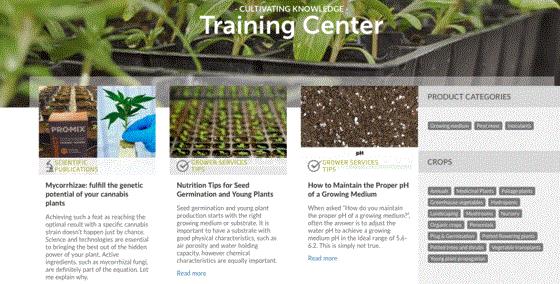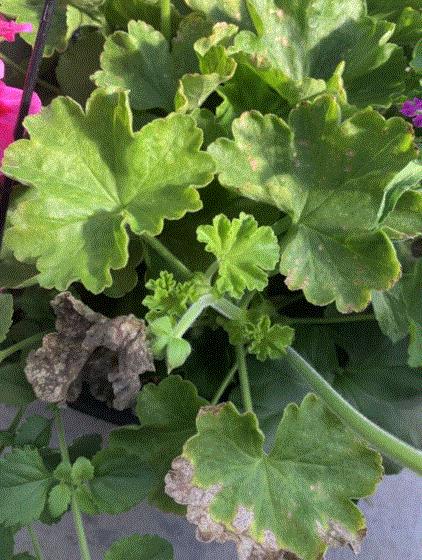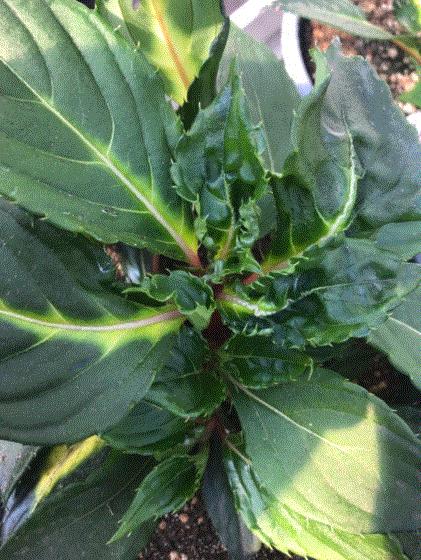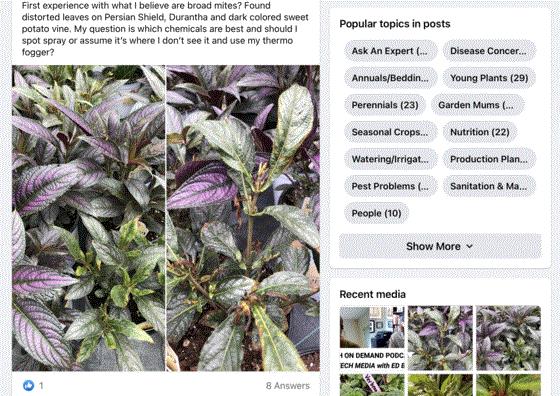Talking Media with Ed Bloodnick
This week, I released our 25th Tech On Demand podcast episode and it’s already gotten a lot of attention. My guest was Ed Bloodnick, grower services and product development director at Premier Tech Horticulture, the company behind PRO-MIX growing media. Ed is well-known in the industry as a technical expert on all things greenhouse, not just media and substrates, and this was a fantastic discussion, chock full of cutting-edge information.

Ed starts by sharing a quick history of soilless media and why our industry moved away from mineral soils in the 1970s. Then we jumped right into the topic of media with added microorganisms, like bacteria and mycorrhizae, and why these “active ingredients” are so important from a plant and soil health perspective. Ed explains how and why Premier Tech developed a strategy to incorporate microorganisms, as well as the differences between them, from endo vs. ecto, and then into the importance of tripartite relationships in optimum plant growth.
The bottom line is that growers using this type of media are seeing the benefits, including enhanced plant growth, disease suppression and improved flowering and fruiting.
We closed it out close by discussing how and why growers should begin trialing new media types in production. The topic may seem complex, and it is, but Ed really did a fantastic job explaining it in a way that makes it understandable for growers of all experience levels.
Check out the LATEST EPISODE HERE, and be sure to subscribe to Tech On Demand, brought to you by GrowerTalks on your favorite podcast app like iTunes, Spotify, Google, Stitcher and many more. You can find those links on our PODCAST WEBPAGE or search on your podcast app.

Premier-Tech Videos & Training
Speaking of Premier Tech Horticulture and PRO-MIX, the company has a comprehensive website for hort pros that's loaded with resources like videos, scientific publications, case studies and presentations. Topics cover a wide range of cutting-edge information on greenhouse production, including nutritional tips for germination and propagation, pH and growing media, products for organic crops, insect suppression using biofungicides and mycorrhizae, media for edible crops and a whole lot more.

The grower services teams at Premier Tech have a ton of experience in greenhouse production and the company prides itself on education and information sharing. That mission is evident when you start exploring their vast TRAINING CENTER ONLINE. Check it out.
Nick’s Tip of the Week: More Edema, Now Geraniums
Each week, I’ll work with my partner in crime Nick Flax, one of the newest technical services experts at Ball, to share a concern that’s come up during one of his numerous calls with growers across North America. This week he’s back on the subject of edema but this time the crop in question is geranium.
PROBLEM: This week, a couple of geranium questions came across my desk. They looked like pH-related issues at first glance, but turned out to be something very different.
If you see general leaf discoloration and necrosis along the margin that starts to swallow up the older leaves, what do YOU normally think is going on? You switch to the Cal-Mag feed to correct it, but a few days later, early stages of the same symptoms start showing up on some of the younger leaves, but the newest growth still looks fine. It’s GOTTA be iron toxicity, right?
Well, if you’re seeing this in your geraniums right about now—especially in your hanging baskets with drip saucers—I’ve got a question for you: What do the undersides of the leaves look like?

NICK’S TIP: If you looked on the leaf undersides and saw dark spots and/or brown- to tan-colored, corky-looking tissue, edema is most likely the cause of the problem. This occurs when plants are taking up more water than they can transpire away, and the internal water pressure in the plant (turgor) gets so high that it causes cells to rupture. One of the cases this week went unchecked long enough that the damage started swallowing up the most heavily affected leaves, so I encourage any growers reading this to not let this one slide if you start seeing this in your greenhouse.
Edema on geraniums tends to be a more prevalent issue for you “wet” growers out there, so if this is you, try to pull that Dramm watering wand out of your vice-like grip and resist the urge to water your geraniums before they can dry down thoroughly!
However, overwatering isn’t the only thing that can cause the imbalance that leads to edema. Watering on a cloudy day or watering too late in the day can contribute to edema, and insufficient airflow in the greenhouse and excessively high relative humidity can lead to insufficient transpiration and excessive turgor pressure, as well.
Also, for any growers who use bottom-heat and keeps their air temperature setpoints low to save on heating, this, too, can lead to edema. Be sure to monitor your geraniums closely for early symptoms and increase your air temp a little bit to reduce occurrences.
Historically, growers have reported this more frequently on ivy geraniums (Pelargonium peltatum) but both cases I saw this week were zonal (P. × hotoroum) and interspecific varieties, so this can happen to any geranium if the conditions are right—or wrong, as the case may be.

Salt-Damaged Impatiens
Have you seen crinkled young leaves on interspecific impatiens crops such as SunPatiens? It could be damage from high salts.
In this photo the damage is pretty clear. One of our technical experts says it looks like high EC and wonders if the grower has done an analysis of their EC levels. The ideal range for this crop is 1.0 – 1.2, and anything higher can cause these symptoms.

The solution? Leach with clear water at least once (maybe twice, depending on the EC reading) and back your feed rate down to around 150 ppm until normal growth resumes. Thankfully, this is a pretty straight-forward tip so you can get that SunPatiens crop back on track quickly.
Success with Cannas
It’s awesome to see so many cannas in the market these days. We’ve moved past many of the issues that plagued this crop for years, thanks to new breeding, better production techniques and seed-raised options. But canna is still considered an at-risk crop, meaning there are inherent challenges that can be avoided using prevention strategies. The good news is that researchers have put in the work and come up with solid protocols to follow that will help ensure a quality crop going out your door.

The risk factors boil down to five main viruses: Canna Yellow Mosaic Virus, Canna Yellow Streak Virus, Bean Yellow Mosaic Virus, Cucumber Mosaic Virus and Tomato Aspermy Virus. Ball Horticulture’s Dr. Will Healy covers these diseases in a recent video, but more importantly he tells you how to avoid them. Seed propagated or virus-tested tissue culture varieties are good bets these days, but you still need to minimize environmental and cultural stress, and will takes viewers through the steps required.
Take 15 minutes with your team to watch THIS VIDEO ON CANNA and you’ll be in good shape to finish your crop strong and ship it for gardeners and landscapers to use in beds and containers. They make such a spectacular show that it’s no surprise their popularity continues to grow.

Trending Tech Topics This Week
With spring production in full gear, I jumped into the GREENHOUSE TECH TEAM GROUP ON FACEBOOK to see what’s on growers’ minds. While some of the most popular posts showed greenhouses filled with beautiful finished production ready to ship, and some cool night shots of operations and comments about how nice it is to be in a greenhouse after dark, most of the peer-to-peer sharing revolved around bugs and disease.

By far the most commented-on post was about Impatiens Downey Mildew rearing its ugly head again. Members commiserated with the grower and shared tips and tricks to avoid the problem in the future. Unfortunately, the disease had spread and the crop was most likely lost.
Another lively post helped a grower battle broad mites on strobilanthes and ipomoea.
One of my favorites was all about community and growers sharing experiences to help other growers, specifically with timing hanging baskets to hit Mother’s Day.
If you’re not a member of the Greenhouse Tech Team Group, jump on Facebook and connect. It’s a “closed group,” meaning you’ll need to be approved to join, but the good news is I am the admin who will approve you! Simply answer a few questions to let me know you’re a greenhouse professional (or just mention this newsletter) and I’ll let you in. Then you can connect with thousands of growers across the globe, search topics using the menu on the right side of the page, or just lurk to see what other growers are talking about.

Finish Line ...
I’ll keep it brief this week because everyone is busy and there are plants to grow and ship. As spring gardening fever continues in some areas and kicks off in others, take some time to reflect on how much of an impact our industry makes. Last year was stressful and challenging for many, yet the products we grow and sell brought beauty and inspiration worldwide. We should all have a sense of pride and appreciation for this wonderful industry. I know I sure do. Good work, everyone!
I hope this edition of Tech On Demand offered information to help you grow your best crops ever. My email is bcalkins@ballhort.com if you have any comments, suggestions or challenges we can help solve.

Bill Calkins
Editor - Tech On Demand
This email was received by you and 22,262 other fine subscribers!
If you're interested in advertising in Tech On Demand, contact Kim Brown ASAP and she'll hook you up.